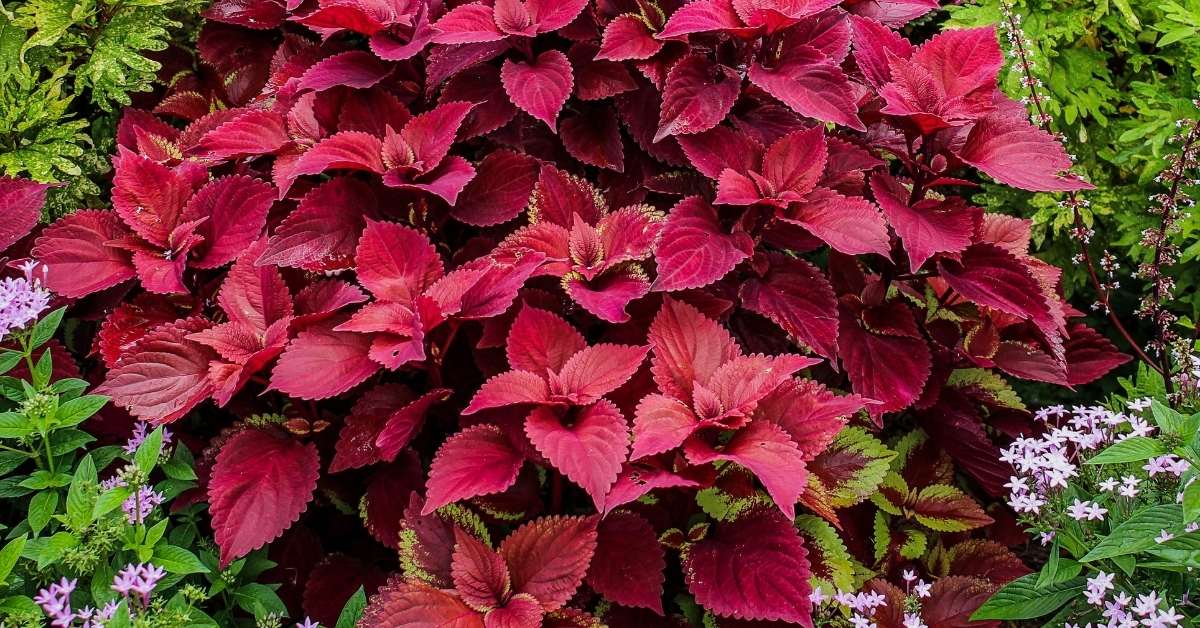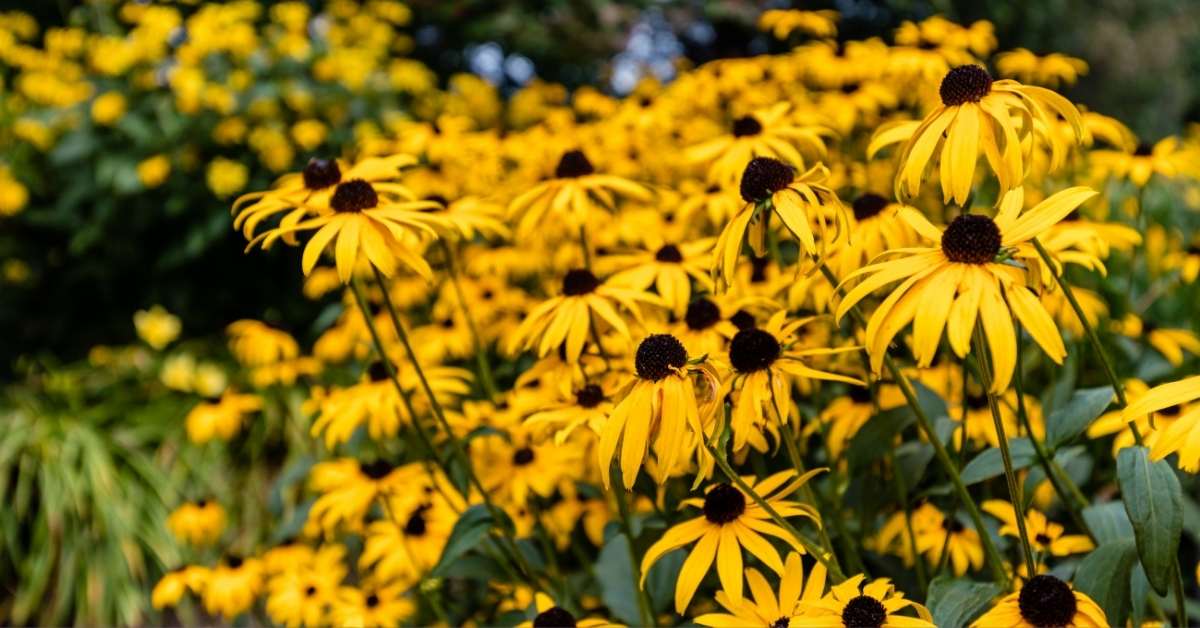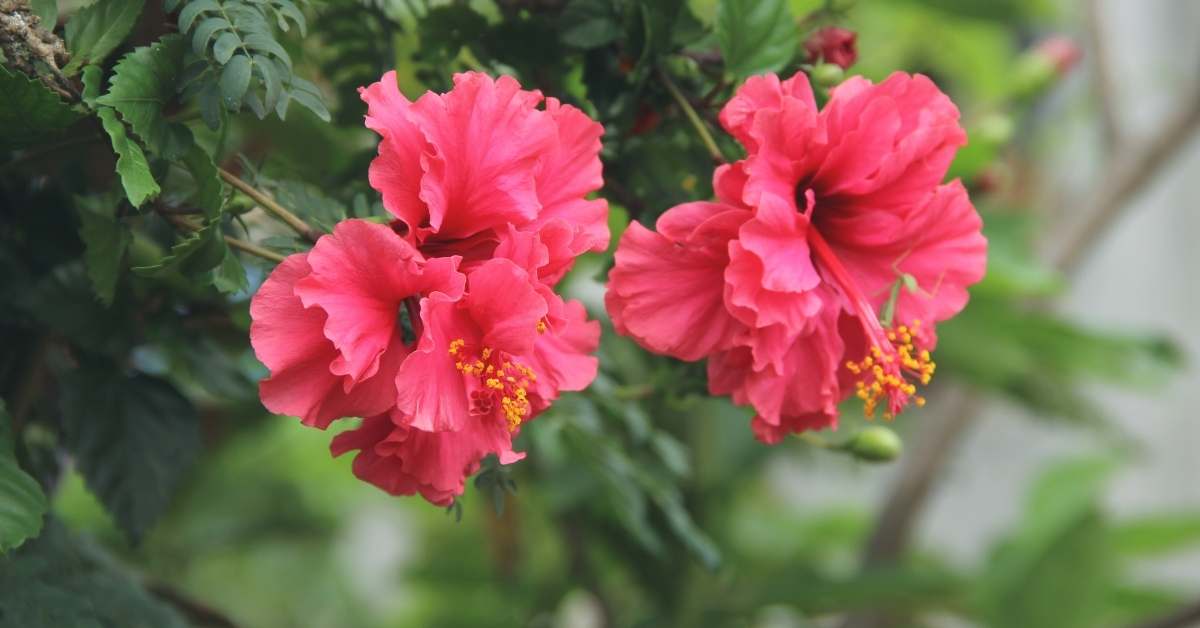Plectranthus is an old-world genus with around 350 species that primarily live in the southern hemisphere’s warm tropical and subtropical regions. Its distribution stretches from Sub-Saharan Africa to Australia and several Pacific islands through Madagascar, India, and the Indonesian archipelago.
Plectranthus is the most prominent genus in the mint and sage family (Lamiaceae) in South Africa, with 44 species native to the nation, the majority of which are found in the eastern side of the country.
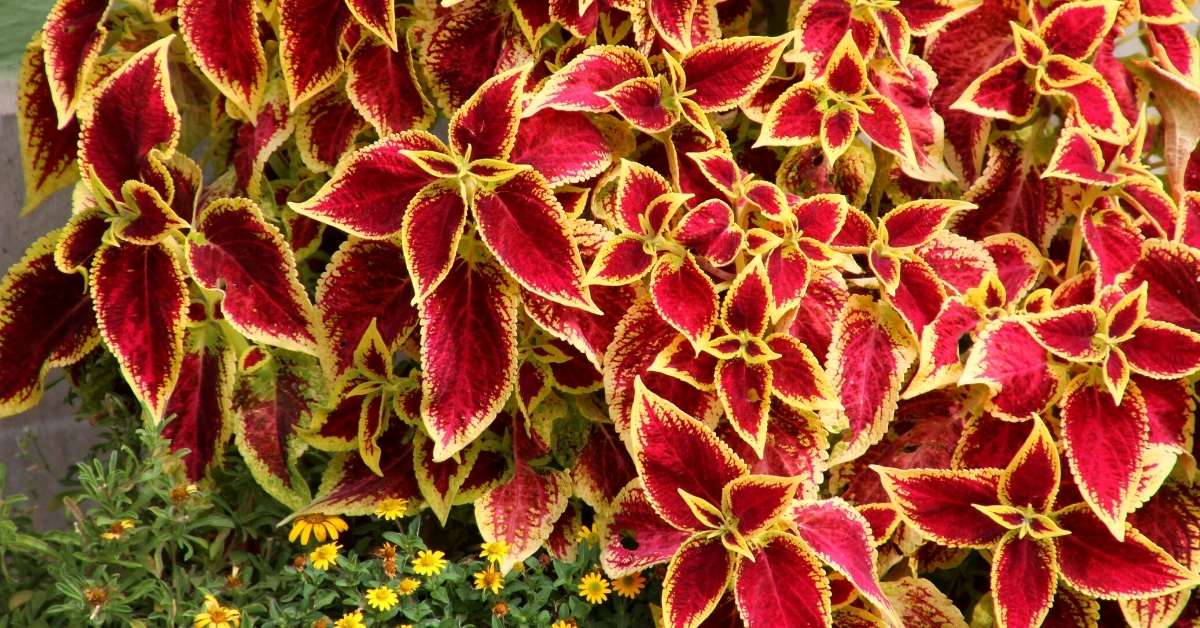
Some Plectranthus varieties make excellent pot plants that can be moved around as needed and can quickly fill a 25cm container.
Charles Louis L’Héritier de Brutelle, a French judge and keen botanist, was the first to define the genus Plectranthus in 1788, using Plectranthus fruticosus as the type species. On a combined plant-collecting excursion to the Cape with Carl Thunberg in 1774, Scottish botanist Francis Masson, a devoted plant hunter for the Royal Botanic Gardens, Kew, had gathered seed from the wild and delivered it to William Aiton.
The latter grew the seedlings in the glasshouses at Kew. When L’Héritier viewed the plants, he realized they belonged to a new genus, Plectranthus. Plectron refers to a spur, while anthos refers to a flower. However, he may have been a little hasty since he later discovered that his new species is the only member of the genus with a spur.
Some of the showiest garden plants in the genus are found in South Africa, giving a mass display of color in late summer and fall. Pink, lavender, and white are among the color options, with numerous hues in between. There are two kinds of yellow blooms. However, they are not suitable for gardens, and their blossoms are too tiny to be appealing.
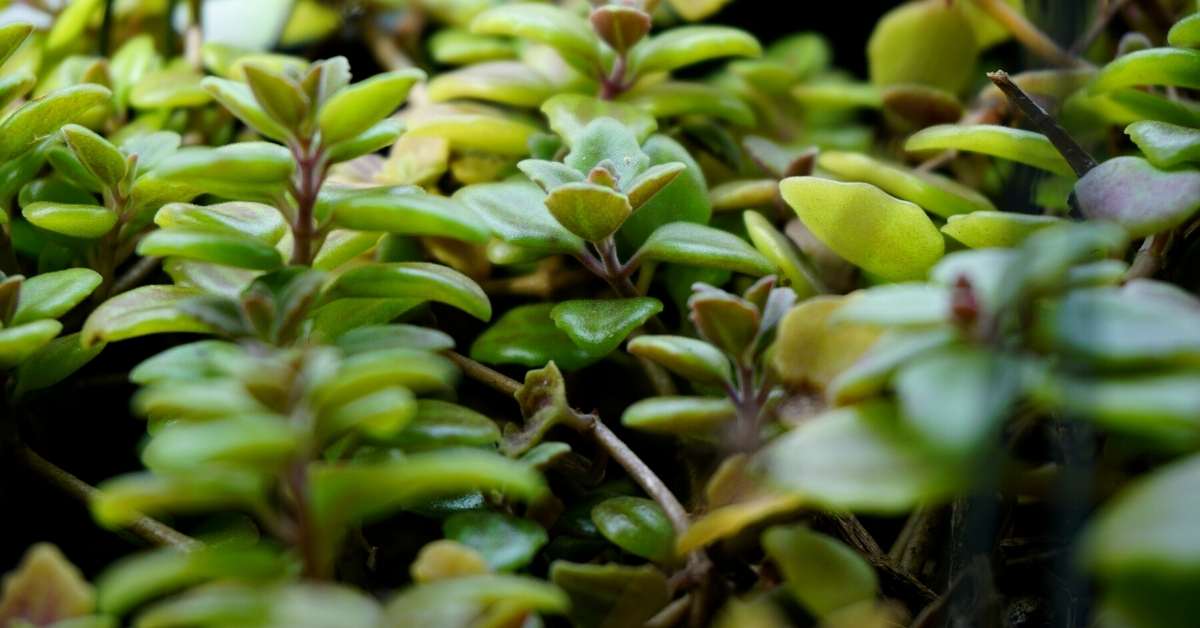
Plectranthus Cultivation
Plectranthus is a simple-to-grow plant that requires little extra care or attention. They like well-composted soils and prefer to grow in semi-shade or cool, south-facing locations. They’re perfect for growing under the shadow of a tree.
They have shallow roots and get plenty of water, yet they store water in their stems and can withstand extended periods of drought. Plectranthus come in various growth patterns, from thick prostrate ground covers to sub-shrubs and huge shrubs, and are typically planted for their beautiful leaves, blooms, or both.
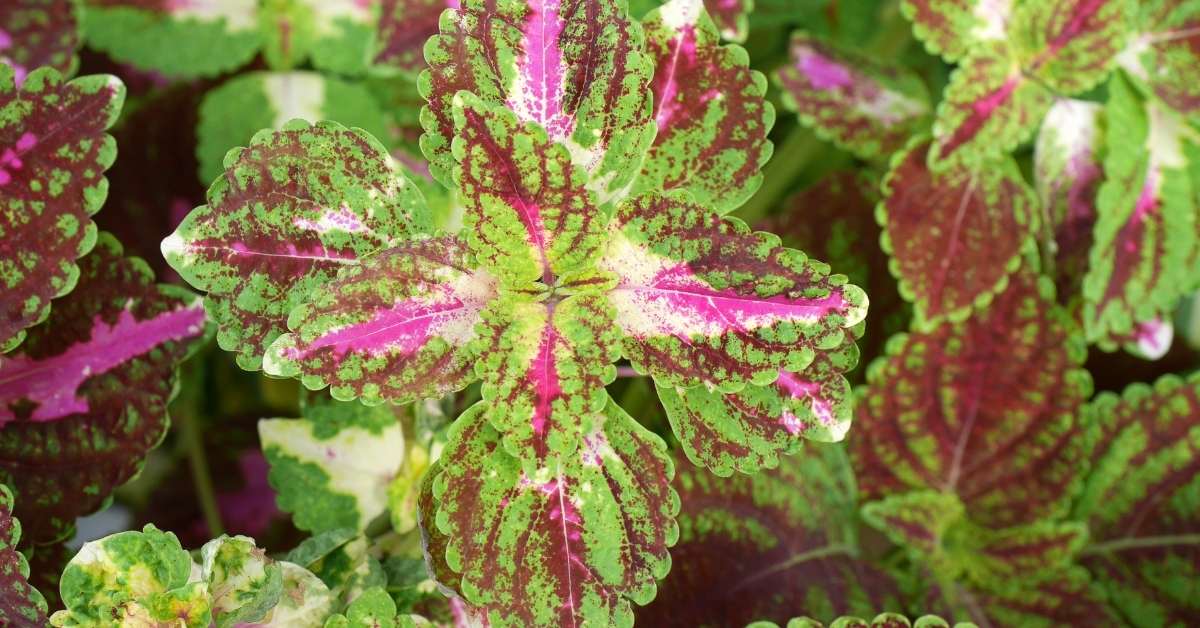
How to care for the Plectranthus plant?
Even though they are frost susceptible, Plectranthus are generally cultivated in shaded, sheltered areas and so have some frost protection. Frost does not affect flowering since they all flower towards the conclusion of the growing season.
If the plants are frost-damaged, they can be trimmed down at the end of the winter and will quickly recover. After a year or more of establishment, the plants grow woodier at the base and more resistant to frost damage.
Pruning:
Most shrubby species will produce healthier, more dense, and beautiful shrubs if they are trimmed down to 1/3 to 1/4 of their original height at the end of the winter before new growth begins for the summer.
After pruning, the best time to cover the soil with a thick layer of compost or organic mulch and apply a balanced fertilizer like 2:3:2 is right thereafter. Except for the occasional clearing up of old-growth and flower spikes, ground-cover plants seldom require pruning.
The foliage of the ground cover species is frequently highly appealing, and they produce dense, attractive carpets that are 150mm to 450mm thick and bloom in the autumn. They easily root at the nodes wherever they contact the ground and produce dense mats in a short period.
Shrubby species range in height from 50cm to 2m and can be planted in groups or as solitary plants. Most species like to be in the shade, although a few can tolerate full light.
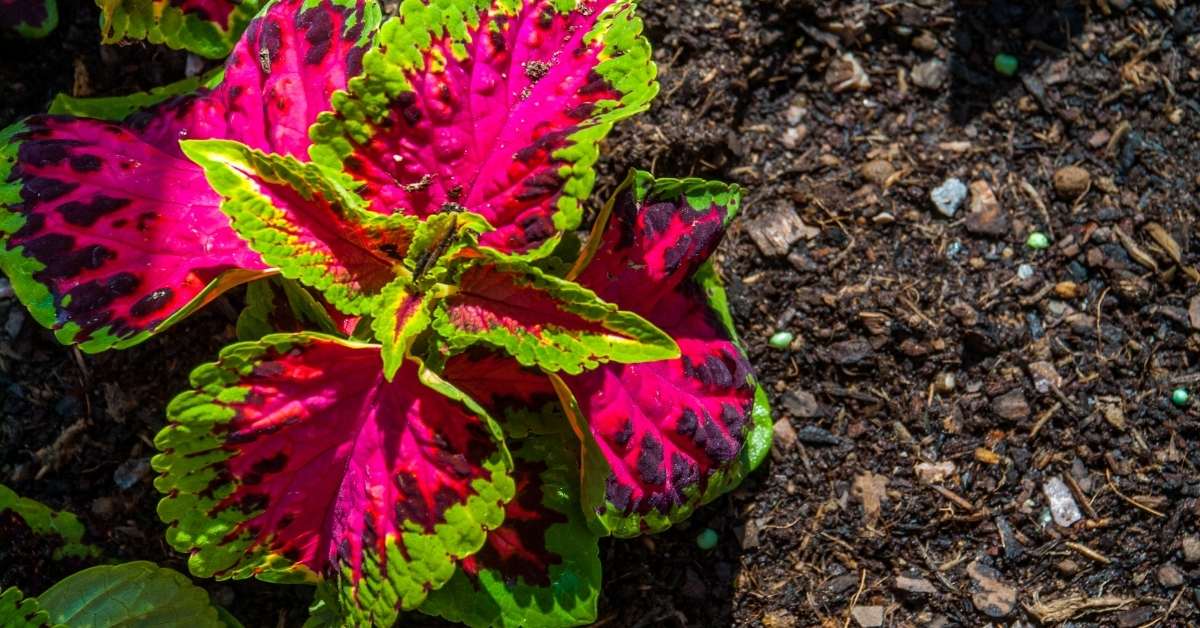
How to Propagate Plectranthus Perennials?
Plectranthus are extremely easy to propagate and may be easily grown with minimal additional treatment. During the early summer and spring, the majority of propagation is done via cuttings. Although the cuttings may be propagated at any time of year, they will have a long summer ahead of them if they are replicated now.
Soft-wood or semi-hardwood cuttings are also acceptable, although tip cuttings are typically the best.
Cutting:
At least two nodes should be preserved in the cuttings, and the leaves from the bottom portion should be removed. Rooting hormone is seldom required and has been known to induce rot in cuttings. The cuttings should be put one-third of their length into clean, double-washed river sand and stored in a warm, shaded location.
Some of the most demanded varietis and cultivars:
1. Plectranthus fruticosus is a kind of Plectranthus (Common name: blue spurflower)
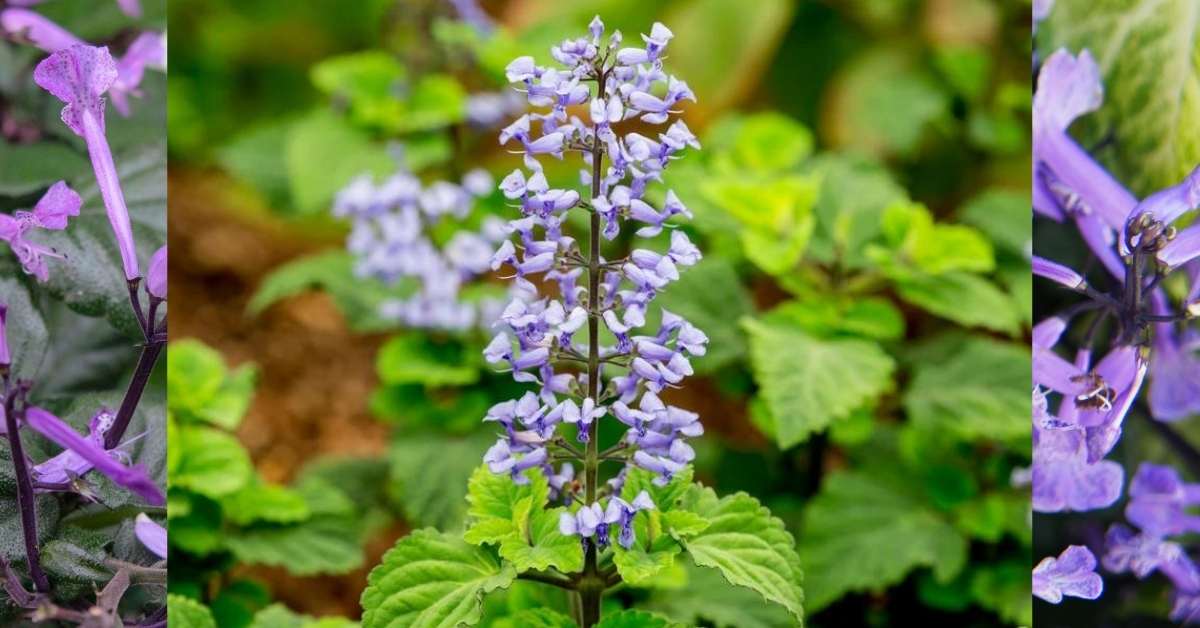
The stunning new cultivar, P. fruticosus’ Liana,‘ is distinguished by its rich blue-mauve flower color and by the fact that it blooms a few weeks later than the other cultivated varieties of this species. Its semi-woody, well-branched perennial growth habit produces a tidy, thick, spherical shrub that grows to a height of 1 – 1.5 meters.
The inflorescence is a branching panicle that emerges from the ends of the branches and the axils of the highest pair of leaves, each panicle reaching up to 300 mm in length and holding around 600 blooms, with six flowers at each node.
The green calyx at the base of the flower is 8 mm long during blossoming and enlarges to 12 mm after the flower has dropped, and it fades to purple near the mouth.
This cultivar’s growing needs are particularly unique in that it develops most strongly when exposed to a lot of direct sunlight. It will grow happily in the shade, but the pace of growth will be considerably slower, and the blooms will be paler.
Under the wild, the plant will live for around 5 years, although this may be extended in cultivation by trimming on a regular basis.
2. Plectranthus ecklonii (Common name: large spurflower)
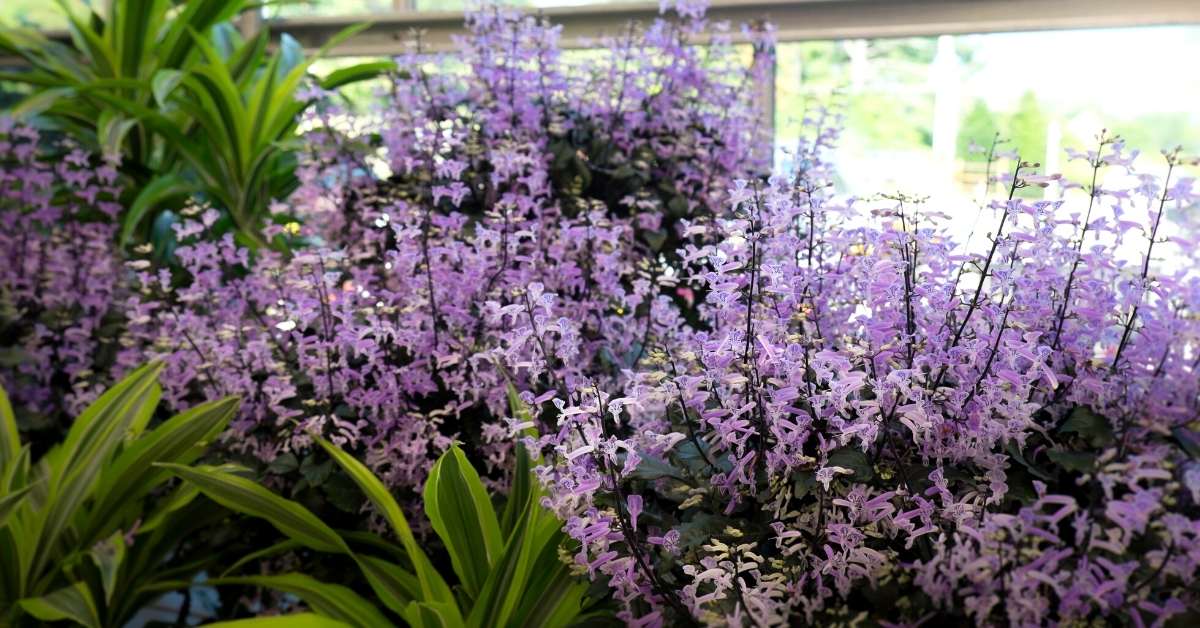
Plectranthus ecklonii is a soft, erect, fast-growing shrub that may reach a height of 3 meters. The square stems have tufts of purple hairs at the nodes, and the leaves are placed in opposing pairs on them. The ovate to elliptical leaves are enormous, ranging from 75 to 190 x 35 to 115 mm, with a wedge-shaped base and a sharp apex.
In the garden, P. ecklonii is a popular and beautiful garden topic. The blue, white, and pink varieties are particularly attractive when planted in large numbers. It’s ideal for cultivating P. ecklonii in partial shade.
It’s not a hardy plant and is best for gardens that don’t get too much frost. It may be cultivated as a container house plant inside in colder areas. P. ecklonii is a fast-growing pioneer shrub that thrives in shaded environments.
The first season after planting, it will bloom profusely—plant at a distance of 60 cm. Midwinter is a good time to prune back aggressively after flowering.
Three cultivars are available: ‘Medley-Wood,’ a typical garden cultivar with blue blooms; ‘Tommy,’ a white flower cultivar; and ‘Erma,’ a pink flower cultivar.
3. Plectranthus verticillatus is a species of Plectranthus (Common names: gossip spurflower, money plant, spur plant)
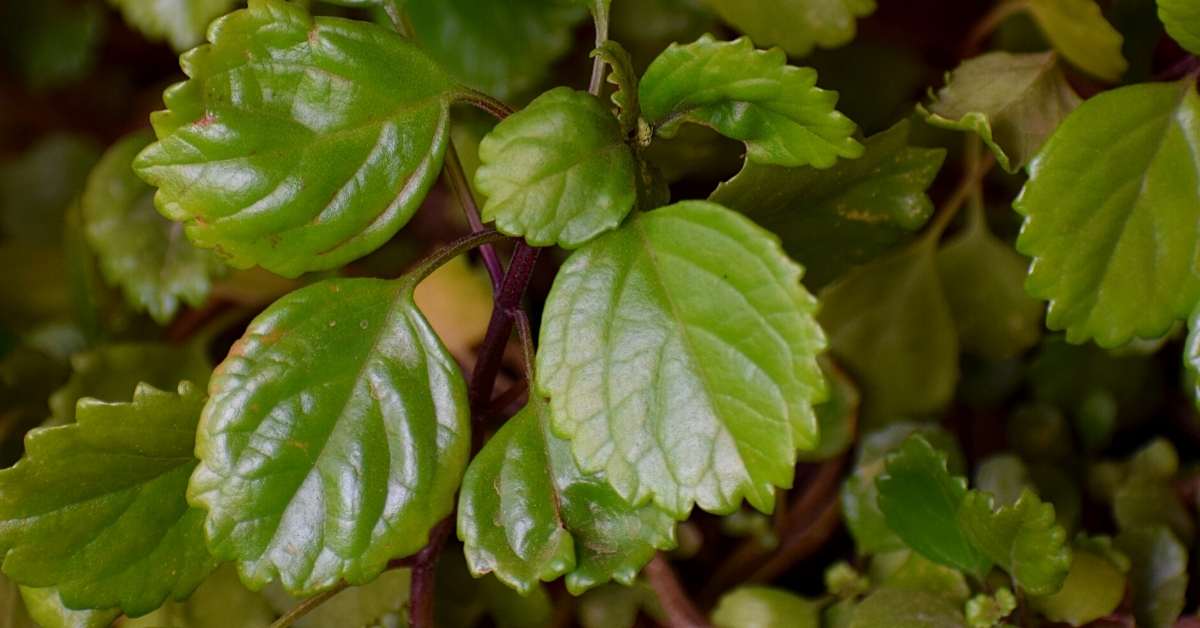
Plectranthus verticillatus is a semi-succulent perennial ground cover endemic to Southeast Africa’s woodlands and forest edges. It’s been a favorite garden topic in many areas of the world for a long time, thanks to its beautiful leaves and delicate white to pale mauve blooms.
The popular “Swedish Ivy” pot and basket hanging plectranthus is P. oertendahlii from the wooded coastal river gorges of KwaZulu-Natal, not P. verticillatus, as it is frequently described in the United States. Variegated leaves with silvery patterns distinguish the latter.
Flowers in white, pale mauve or pale pink emerge irregularly in gardens throughout the year, but most abundantly in spring and late fall.
In warmer climates, P. verticillatus is a popular nursery plant. ‘Barberton,’ ‘Blyde,’ ‘Eureka,’ ‘Freckles,’ ‘Gossip,’ ‘Malelaan,’ ‘Money Maker,’ ‘Pink Surprise,’ and ‘Ubombo’ are only a few of the commercial cultivars created here and elsewhere, including numerous variegated varieties.
4. Plectranthus’ Mona Lavender is a kind of Plectranthus (Common names spurflower, Mona Lavender)
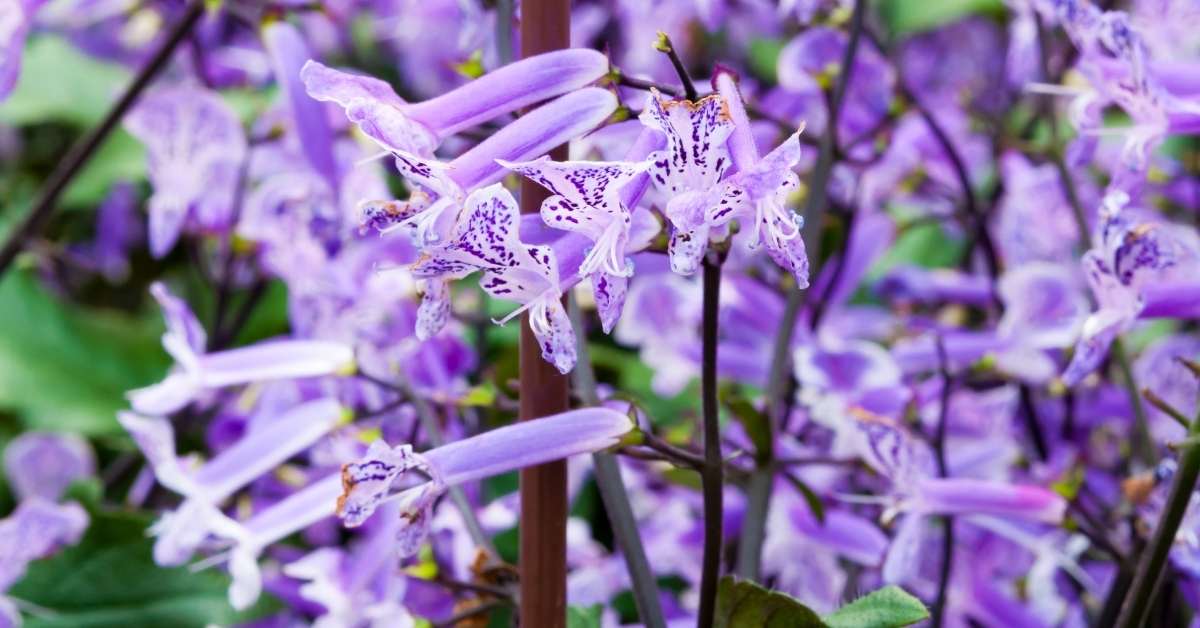
Plectranthus’ Mona Lavender‘ is a fast-growing hybrid, herbaceous, perennial shrub that grows to a height of 75 cm and forms a beautiful, rounded, thick bush.
It features dark green, glossy leaves with purple undersides, and lavender flower sprays with purple patterns.
It blossoms infrequently but thrives in less daylight, which begins in October but can be extended until early June, depending on how old the plant is and how far it has been cut back.
Any gardener will enjoy growing ‘Mona Lavender because it is relatively versatile and trouble-free. It thrives in both shady and partially sunny environments. It tends to stay smaller and more compact in the light, and the leaves have a much more vivid coloration, particularly on the purple undersides of the leaf.
Pinching back the plants encourages more significant branching and compactness. They’re a great bedding plant that looks excellent in mass planting or as individual plants in an existing bedding arrangement. They also make excellent pot plants that can be moved around as needed and quickly fill a 25cm container.
How to fertilize Plectranthus?
They also love feeding, which may be done at any time but should not be done before or during blossoming. A basic all-purpose 2-3-2 fertilizer as a granular or liquid feed can be used, but be sure to water it well since it is easy to burn the delicate roots or use a fully organic fertilizer to avoid this.
One of the few drawbacks of ‘Mona Lavender is that it, like other Plectranthus, can not endure extreme cold, but it has been reported to withstand minor frosts.
Plant it in the spring if you live in a region prone to winter frosts, and it will blossom in the autumn before the winter frosts take their toll. It may be planted at any time of year in areas that do not get strong frosts.
5. Plectranthus zuluensis is a kind of Plectranthus (Common name: Zulu spurflower)
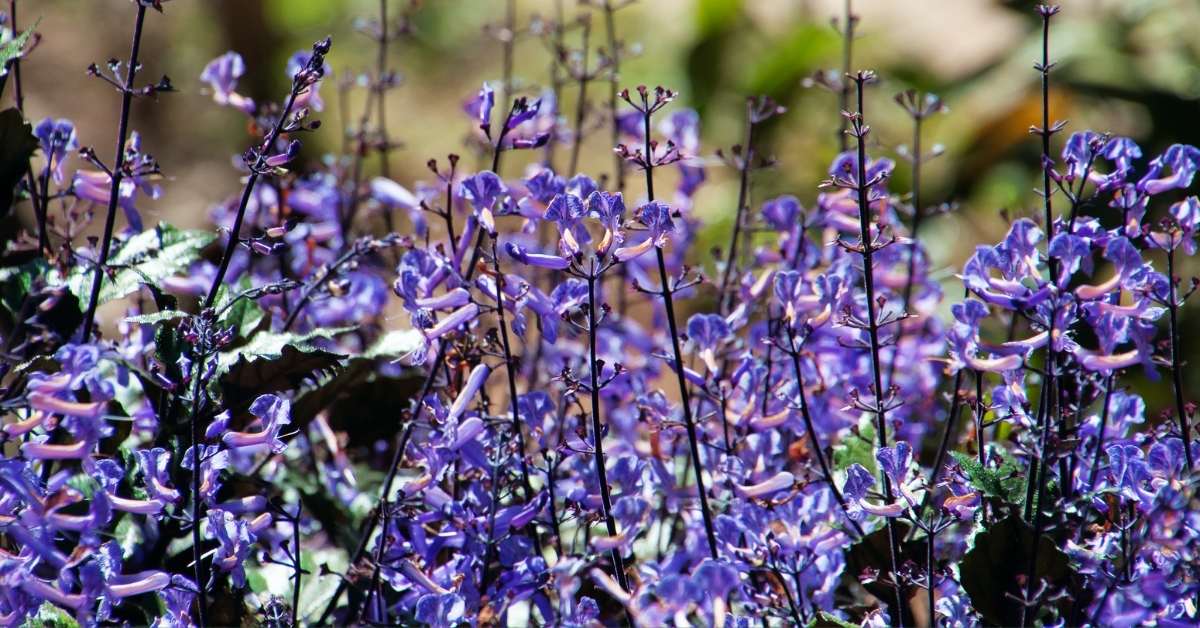
Plectranthus zuluensis is a beautiful, gently erect shrub with velvet textured leaves and stunning dark purple blooms, making it a winner for shady places in rainy summer gardens.
P. zuluensis is a soft shrub that grows up to 2 meters tall and has many branching, four-angled, hairy stems that are velvety to the touch when young. The soft, semi-succulent leaves are oval in shape, with coarsely serrated edges and small, colorless glands covering them.
The plant is abundant along stream banks, and deep river gorges in humus-rich soil and shady or semi-shady regions on the edges of semi-coastal, subtropical woods in its native habitat. It’s ideal for gardening in warm, frost-free climates.
6. Fuzzy Wuzzy (Plectranthus ‘Fuzzy Wuzzy’)
Fuzzy Wuzzy plectranthus (Plectranthus neochilus ‘Fuzzy Wuzzy’) is a succulent plant that forms a low-growing mat of gray-green leaves with white margins. It is also called a lobster flower for its blue-purple flowers that resemble lobster claws. It blooms from spring to late fall and attracts hummingbirds, bees, and butterflies. It grows up to 1 foot tall and 2 feet wide and prefers full sun to partial shade and well-drained soil. Fuzzy Wuzzy plectranthus is drought-tolerant and pest-resistant, requiring only occasional watering and fertilizing. It can be grown as a groundcover, container, or houseplant. Fuzzy Wuzzy plectranthus is a variegated cultivar of Plectranthus neochilus, a species native to South Africa. When crushed, it has a strong minty smell and can be used as a mosquito repellent.
7. Blue Yonder or Blue Spire plectranthus (Plectranthus parviflorus ‘Limplep1’)
Blue Yonder plectranthus (Plectranthus parviflorus ‘Limplep1’) is a stunning plant that produces spires of sky-blue flowers in summer. It has green foliage edged in white, creating a striking contrast with the blooms. This plant is native to Australia and grows well in partial shade and well-drained soil. It can reach up to 14 inches tall and 24 inches wide, making it a great choice for borders, containers, or hanging baskets. Blue Yonder plectranthus attracts hummingbirds, bees, and butterflies with its nectar-rich flowers. It is also drought-tolerant and low-maintenance, requiring only occasional pruning to keep it tidy and bushy. Blue Yonder plectranthus is a hybrid of Plectranthus parviflorus, a species that has medicinal uses in traditional Australian medicine.
8. Nico (Plectranthus ‘Nico’)
Nico plectranthus (Plectranthus coleoides ‘Nico’) is a striking plant that has dark green leaves with purple veins and undersides. It is a semi-trailing plant that grows well in containers, hanging baskets, or as a groundcover. It can reach up to 12 inches tall and 36 inches wide and prefers partial shade and moist soil. Nico plectranthus is drought-tolerant and pest-resistant, requiring only occasional watering and fertilizing. It rarely blooms, but when it does, it produces small lavender flowers in late summer or fall. Nico plectranthus is a cultivar of Plectranthus coleoides, a species native to India and Sri Lanka. It is also known as Cuban oregano or Indian borage and has edible leaves that can be used as a culinary herb.
9. Cerveza ‘n Lime (Plectranthus coleoides ‘Cerveza ‘n Lime’)
Cerveza ‘n Lime plectranthus (Plectranthus coleoides ‘Cerveza ‘n Lime’) is a delightful plant that has fuzzy, scalloped green leaves with a citrusy scent. It is a trailing plant that grows well in containers, hanging baskets, or as a groundcover. It can reach up to 18 inches tall and wide and prefers partial shade and well-drained soil. Cerveza ‘n Lime plectranthus is drought-tolerant and low-maintenance, requiring only occasional fertilization and pruning. It rarely blooms, but when it does, it produces small lavender flowers in late summer or fall. Cerveza ‘n Lime plectranthus is a hybrid of Plectranthus coleoides, a species native to India and Sri Lanka. It is also known as Cuban oregano or Indian borage and has edible leaves that can be used as a substitute for oregano or sage in cooking.
10. Cuban oregano (Plectranthus amboinicus)
Cuban oregano plectranthus (Plectranthus amboinicus) is a succulent herb that has thick, fleshy leaves with a strong oregano-like flavor and aroma. It is native to Africa and India and grows well in warm and humid climates. It can reach up to 12 inches tall and wide and prefers full sun to partial shade and well-drained soil. Cuban oregano plectranthus is drought-tolerant and pest-resistant, requiring only occasional watering and fertilizing. It produces small lavender-pink flowers in winter, but they are not very showy. Cuban oregano plectranthus is also known as Indian borage, Spanish thyme, or Mexican mint and has edible leaves that can be used fresh or dried as a culinary herb. It is especially popular in Caribbean, Indian, and Mexican cuisines. Cuban oregano plectranthus is a hybrid of Plectranthus amboinicus and Plectranthus tomentosus, two species that have medicinal uses in traditional medicine.
11. Green on Green (Plectranthus ‘Green on Green’)
Green on Green plectranthus (Plectranthus scutellarioides ‘Green on Green’) is a vibrant plant that has bright green leaves with yellow-green edges. It is a compact plant that grows well in containers, hanging baskets, or as a groundcover. It can reach up to 12 inches tall and wide and prefers partial shade and moist soil. Green on Green plectranthus is drought-tolerant and pest-resistant, requiring only occasional watering and fertilizing. It produces spikes of blue flowers in late summer or fall that add a pop of color. Green on Green plectranthus is a cultivar of Plectranthus scutellarioides, a species native to Southeast Asia and Australia. It is also known as coleus or painted nettle and has edible leaves that can be used as a salad green or a tea ingredient.
12. Swedish ivy (Plectranthus verticillatus or P. australis)
Swedish ivy (Plectranthus verticillatus or P. australis) is a lovely plant that has green leaves with scalloped edges and hairs. It is a trailing plant that grows well in containers, hanging baskets, or as a groundcover. It can reach up to 12 inches tall and 4 feet wide and prefers bright, indirect light and well-drained soil. Swedish ivy is drought-tolerant and pest-resistant, requiring only occasional watering and fertilizing. It produces spikes of white or pale purple flowers in spring, winter, or fall that have a spur shape. Swedish ivy is a species native to Australia and the Pacific Islands. It is also known as creeping charlie or Swedish begonia and has a pungent scent when crushed.
13. Emerald Lace (Plectranthus ‘Emerald Lace’)
Emerald Lace plectranthus (Plectranthus oertendahlii ‘Emerald Lace’) is a charming plant that has rounded, scalloped leaves with a lacy gray-green pattern of markings. It is a compact plant that grows up to 8 inches tall and 12 inches wide and has a trailing habit. It produces spikes of white or pale lavender flowers in fall and spring. It grows well in partial shade and well-drained soil. Emerald Lace plectranthus is drought-tolerant and low-maintenance, requiring only occasional watering and fertilizing. It can be grown as a groundcover, a container plant, or a houseplant. Emerald Lace plectranthus is a cultivar of Plectranthus oertendahlii, a species native to South Africa. It is also known as prostrate coleus, silver Swedish ivy, or candle plant.
14. Drege (Plectranthus ‘Drege’)
Drege plectranthus (Plectranthus ciliatus ‘Drege’) is a tropical plant that has green leaves with purple veins and undersides. It is also called spur flower for its small pink flowers that appear in spring and summer. It grows up to 12 inches tall and 24 inches wide and prefers partial shade and moist soil. Drege plectranthus is drought-tolerant and pest-resistant, requiring only occasional watering and fertilizing. It can be grown as a groundcover, a container plant, or a houseplant. Drege plectranthus is a cultivar of Plectranthus ciliatus, a species native to Africa and Madagascar. It is a member of the mint family (Lamiaceae) and has a minty smell when crushed.
15. Nicoletta (Plectranthus ‘Nicoletta’)
Nicoletta plectranthus (Plectranthus ciliatus ‘Nicoletta’) is a beautiful plant that has green leaves with purple edges and veins. It is a bushy plant that grows well in containers, hanging baskets, or as a groundcover. It can reach up to 18 inches tall and wide and prefers partial shade and moist soil. Nicoletta plectranthus is drought-tolerant and pest-resistant, requiring only occasional watering and fertilizing. It produces spikes of purple flowers in late summer or fall that attract pollinators. Nicoletta plectranthus is a cultivar of Plectranthus ciliatus, a species native to Africa and Madagascar. It is a member of the mint family (Lamiaceae) and has a minty smell when crushed.
16. Ochre Flame (Plectranthus ‘Ochre Flame’)
Ochre Flame plectranthus (Plectranthus ‘Ochre Flame’) is a stunning plant that has green leaves with yellow margins and purple veins. It is a bushy plant that grows well in containers, hanging baskets, or as a groundcover. It can reach up to 18 inches tall and wide and prefers partial shade and moist soil. Ochre Flame plectranthus is drought-tolerant and pest-resistant, requiring only occasional watering and fertilizing. It produces spikes of blue flowers in fall that contrast beautifully with the foliage. Ochre Flame plectranthus is a hybrid of Plectranthus ciliatus and Plectranthus saccatus, two species native to South Africa. It is also known as spur flower or flame nettle and has a minty scent when crushed.
17. Silver Shield (Plectranthus argentatus)
Silver Shield plectranthus (Plectranthus argentatus ‘Silver Shield’) is a stunning plant that has silvery-gray leaves with scalloped edges. It is an upright plant that grows well in containers, hanging baskets, or as a groundcover. It can reach up to 2.5 feet tall and wide and prefers partial shade and well-drained soil. Silver Shield plectranthus is drought-tolerant and pest-resistant, requiring only occasional watering and fertilizing. It produces spikes of bluish-white flowers in summer that add a touch of color. Silver Shield plectranthus is a cultivar of Plectranthus argentatus, a species native to Australia. It is also known as silver spurflower and has velvety leaves that are attractive to the touch.
18. Vicks plant (Plectranthus tomentosa)
Vicks plant (Plectranthus tomentosa) is a fragrant plant that has green leaves with scalloped edges and purple stems. It is a succulent plant that grows well in containers, hanging baskets, or as a groundcover. It can reach up to 2 feet tall and wide and prefers bright but indirect light and well-drained soil. Vicks plant is drought-tolerant and pest-resistant, requiring only occasional watering and fertilizing. It produces spikes of white to light purple flowers in spring and fall that are not very showy. Vicks plant is a species native to South Africa. It is also known as succulent coleus, Cuban oregano, or vaporub plant and has a minty and camphor scent when crushed.
19. Spur flower (Plectranthus ciliatus)
Plectranthus ciliatus (Common name: eyelash spur flower) is a charming plant that has green leaves with purple edges and hairs. It is a trailing plant that grows well in containers, hanging baskets, or as a groundcover. It can reach up to 12 inches tall and 4 feet wide and prefers partial shade and well-drained soil. Plectranthus ciliatus is drought-tolerant and pest-resistant, requiring only occasional watering and fertilizing. It produces spikes of blue, pink, or white flowers in spring, winter, or fall that attract bees and butterflies. Plectranthus ciliatus is a species native to South Africa. It is also known as plectranthus ‘Troy’s Gold’ or plectranthus ‘Zulu Wonder’ and has variegated leaves that are golden or silver in color.
20. Variegata (Plectranthus madagascariensis ‘Variegata’)
Variegata plectranthus (Plectranthus madagascariensis ‘Variegata’) is a charming plant that has green leaves with white margins and purple undersides. It is a trailing plant that grows well in containers, hanging baskets, or as a groundcover. It can reach up to 12 inches tall and 3 feet wide and prefers partial shade and well-drained soil. Variegata plectranthus is drought-tolerant and pest-resistant, requiring only occasional watering and fertilizing. It produces spikes of white flowers in summer that are not very showy. Variegata plectranthus is a cultivar of Plectranthus madagascariensis, a species native to Madagascar and South Africa. It is also known as a variegated mint leaf or variegated Swedish ivy and has a minty scent when crushed.
21. Troy’s Gold (Plectranthus scutellarioides ‘Troy’s Gold’)
Troy’s Gold plectranthus (Plectranthus scutellarioides ‘Troy’s Gold’) is a stunning plant that has yellow leaves with green edges and purple veins. It is a bushy plant that grows well in containers, hanging baskets, or as a bedding plant. It can reach up to 18 inches tall and wide and prefers partial shade and moist soil. Troy’s Gold plectranthus is drought-tolerant and pest-resistant, requiring only occasional watering and fertilizing. It produces spikes of blue flowers in summer that are not very showy. Troy’s Gold plectranthus is a cultivar of Plectranthus scutellarioides, a species native to Southeast Asia and Australia. It is also known as coleus or painted nettle and has a minty scent when crushed.
22. Marginatus (Plectranthus coleoides ‘Marginatus’)
Marginatus plectranthus (Plectranthus coleoides ‘Marginatus’) is a striking plant that has green leaves with white edges and purple stems. It is a bushy plant that grows well in containers, hanging baskets, or as a bedding plant. It can reach up to 18 inches tall and wide and prefers partial shade and moist soil. Marginatus plectranthus is drought-tolerant and pest-resistant, requiring only occasional watering and fertilizing. It produces spikes of lavender flowers in summer that are not very showy. Marginatus plectranthus is a cultivar of Plectranthus coleoides, a species native to India and Sri Lanka. It is also known as white-edged Swedish ivy or white-edged spur flower and has a minty scent when crushed.
23. Mentholatum plant (Plectranthus neochilus)
The mentholatum plant (Plectranthus neochilus) is a fragrant plant that has green leaves with scalloped edges and purple stems. It is a bushy plant that grows well in containers, hanging baskets, or as a groundcover. It can reach up to 2 feet tall and wide and prefers partial shade and moist soil. Mentholatum plant is drought-tolerant and pest-resistant, requiring only occasional watering and fertilizing. It produces spikes of blue-purple flowers in spring and fall that are not very showy. The mentholatum plant is a species native to South Africa. It is also known as camphor spur flower or Vicks plant and has a minty scent when crushed.
24. Petunias (Plectranthus saccatus)
Petunias (Plectranthus saccatus) is a beautiful plant that has green leaves with purple veins and purple flowers that resemble petunias. It is a shrubby plant that grows well in containers, hanging baskets, or as a border plant. It can reach up to 3 feet tall and wide and prefers partial shade and moist soil. Petunias are drought-tolerant and pest-resistant, requiring only occasional watering and fertilizing. It produces spikes of purple flowers in fall and winter that are very showy. Petunias is a hybrid of Plectranthus saccatus and Plectranthus hilliardiae, two species native to South Africa. It is also known as Mona Lavender or lavender spur flower and has a minty scent when crushed.
25. Prostrate coleus, silver Swedish ivy, or candle plant (Plectranthus oertendahlii)
Prostrate coleus, silver Swedish ivy, or candle plant (Plectranthus oertendahlii) is a lovely plant that has green leaves with silver markings and purple undersides. It is a trailing plant that grows well in containers, hanging baskets, or as a groundcover. It can reach up to 6 inches tall and 2 feet wide and prefers partial shade and moist soil. Prostrate coleus, silver Swedish ivy, or candle plant is drought-tolerant and pest-resistant, requiring only occasional watering and fertilizing. It produces spikes of white flowers in winter that are not very showy. Prostrate coleus, silver Swedish ivy, or candle plant is a species native to South Africa. It is also known as emerald green Swedish ivy and has a minty scent when crushed.
26. Plectranthus ernstii (Common name: Ernst’s spurflower)
Plectranthus ernstii is a rare and unusual succulent shrub that grows up to 1 meter tall and has thick, fleshy stems and leaves. It is endemic to the Eastern Cape province of South Africa, where it grows on rocky slopes and cliffs in dry areas. It has grey-green, oval leaves that are covered with fine hairs and have a distinctive lemon scent when crushed. The flowers are small, tubular, and pale pink to purple, and they appear in dense spikes at the ends of the branches from late summer to autumn. Plectranthus ernstii is a great plant for rock gardens, containers, or sunny borders. It prefers well-drained soil and moderate water and can tolerate light frost. It can be easily propagated by stem cuttings or seeds. It is named after Ernst van Jaarsveld, a South African botanist and horticulturist who specializes in succulent plants.
Conclusion
Plectranthus is a diverse and fascinating genus of plants that offers a variety of options for gardeners and plant lovers. They are easy to grow and care for, and they produce beautiful foliage and flowers in different colors and shapes. They are also fragrant, succulent, and attractive to insects and birds. Whether you are looking for a ground cover, a shrub, a pot plant, or a hanging basket plant, you can find a Plectranthus species that suits your needs and preferences. Plectranthus is a genus that deserves more attention and appreciation for its beauty and versatility.
Is Plectranthus a fragrant plant?
Yes. Plectranthus is known for its fragrant leaves, which release a wide range of scents when crushed or brushed against, and the genus itself has a wide range of smells. Plectranthus blooms generate a lot of nectar, attracting many insects that transmit pollen from blossom to flower.
What are the benefits of growing Plectranthus
Plectranthus plants are easy to grow and care for, and they offer a variety of foliage and flower colors, and shapes. They are also fragrant, succulent, and attractive to insects and birds. They can be grown in the garden, in containers, or as houseplants, depending on the species and the climate.
How do I propagate Plectranthus plants?
Plectranthus plants can be easily propagated by stem cuttings or seeds. Stem cuttings can be taken at any time of the year, but preferably in spring or summer. They should be inserted one-third of their length into a moist, well-draining potting mix and kept in a warm, shaded place until they root. Seeds can be sown shallowly (1/4 inch) in well-draining soil after the weather warms to 70°F or indoors in pots 6-8 weeks before the last frost of the season.
How do I prune Plectranthus plants?
Plectranthus plants do not require much pruning except for cosmetic reasons or to maintain their shape and size. Most shrubby species will benefit from being cut back by one-third to one-fourth of their original height at the end of winter before new growth begins. This will encourage more branching and flowering. Ground cover species can be trimmed occasionally to remove old growth and flower spikes. Dead or damaged stems and leaves should be removed as needed.
